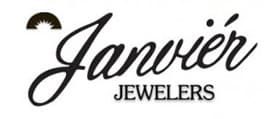Captivating, charming, classic, chic… Those are the 4Cs, right? No, the real 4Cs – carat, cut, clarity and color – are the factors used to determine a diamond’s quality and value. The four components are essentially what give a stone its sparkle and fire. They also help us estimate the cost or resale price of a stone.
Understanding the 4 Cs is priceless if you will be diamond engagement ring shopping. This guide will empower you to verify the quality and value of the diamond you are purchasing.
Understanding the Four Factors of Diamond Quality
Here is a detailed overview of what these 4Cs describe and how they are measured.
Carat
Carat weight helps us to answer the question, “How big is the diamond?” A carat is a measurement that jewelers use to calculate the size of the stone. Typically, the larger the carat weight, the higher the price, because larger diamonds are more rare.
If you see a ring that is described as “total carat weight,” this is the sum of all the diamonds in the ring added up. A smart way to get a larger overall ring on a smaller budget is to choose one with several diamonds instead of just one solitaire. For example, a 2-carat total weight diamond ring with a smaller center stone and several side diamonds is generally much less expensive than a 2-carat solitaire, even though it offers the same amount of carat weight.
As important as it is for the overall style and statement, the size of the diamond isn’t the only aspect determining the quality and cost of the stone. Another important C is…
Cut
The cut of a diamond varies greatly from one to the next, and the price changes with it. The round cut is the most common cut, but other, more exotic cuts like the brilliant or cushion cut may be more expensive. This is because it takes longer to make more complex cuts and these cuts demand a higher quality stone in order to showcase the expected fire and sparkle.
The other aspect of this C refers to the quality of a cut. According to the GIA, the cut of a diamond is graded from “excellent” to “poor.” This is often the most difficult grading factor for a regular shopper to understand. Each diamond shape has set proportions that it should respect in order to maximize its shiny qualities. The cuts that fit these dimensions rank higher up on the scale. For example, shallow cut diamonds, though they may look larger from the top, are an example of a less-than-perfect cut.
See Janvier Jewelers’ Guide to Diamond Cuts.
Clarity
Carat weight and cut are joined by clarity in properly reviewing a diamond’s quality. Stones are rarely perfect, even if it looks flawless to the naked eye. During their formation, diamonds develop small inclusions and imperfections inside, and the presence or lack of these are measured by “clarity.”
Jewelers grade clarity from the extremely rare “flawless,” to “very slightly included” all the way down to “included.” This scale offers a wide range of clarity grades, and the closer to flawless a diamond ranks, the higher its value and price.
It’s important to note that even a slightly included stone can provide exquisite brilliance and make a bold statement. It won’t be as transparent, fiery or expensive, as a stone with a higher grade, however. Aim to buy as clear a stone as your budget will allow for optimum opulence.
Color
Finally, the fourth C of color comes into play. Most diamond shoppers can see if a diamond is nearly colorless or if it has an off-white hue.
The diamond color scale starts at D, or colorless, and ends at Z, which is a light-yellow color. Diamonds on the lower end of the scale – especially D, E and F – are practically lacking in color, which enhances the diamond’s overall dazzle. The cost of these diamonds reflects their rarity. Buyers on a budget may look at stones in the G or H category to invest in a more cost-effective stone.
Where to Find High-Quality Diamonds
If you are shopping for an engagement ring, it’s important to understand the 4 “C’s”. To avoid making an uninformed decision, visit a fine jewelry shop and look at the stones in person. The staff will be glad to show you examples of different quality diamonds. They will thoroughly explain your options and help you find the one that’s right for your ring.
Ready to start your search for the perfect stone? Take a look at Janvier Jewelers’ Diamond Search Tool.
Find the Perfect Diamond for Your Engagement Ring
Don’t get overwhelmed with the fine points of diamond buying, visit Janvier Jewelers or call (302) 366-7448. Our experienced jewelry professionals work with customers to choose the perfect stone to fit your style and budget. We have been helping couples to select engagement and bridal jewelry since 1975.

